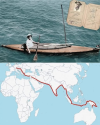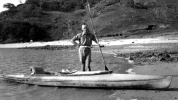View attachment 33331
Far beyond the planets, more than 15 billion miles from home, Voyager 1 still sails through the cosmic dark — a lone messenger from 1977.
Launched when disco ruled the radio, it carries less memory than a single smartphone photo, stores data on an 8-track tape system, and runs on FORTRAN code written before most of today's engineers were born.
Its endurance comes from tough, radiation-hardened parts, a minimalist design with fewer failure points, and redundant systems ready to take over when one falters. The spacecraft also holds the famous Golden Record a time capsule of Earth's music, greetings, and sounds, meant for any distant civilization that might find it.
Keeping it alive isn't easy: every signal takes 22 hours to arrive, so engineers must solve problems without instant feedback, often referencing 50-year-old blueprints and hand-drawn schematics.
Voyager 1 isn't just a machine it's a reminder of what happens when we build for durability, think creatively, and dream beyond our own lifetimes.
It's our postcard to the universe, still in delivery.
























































































































